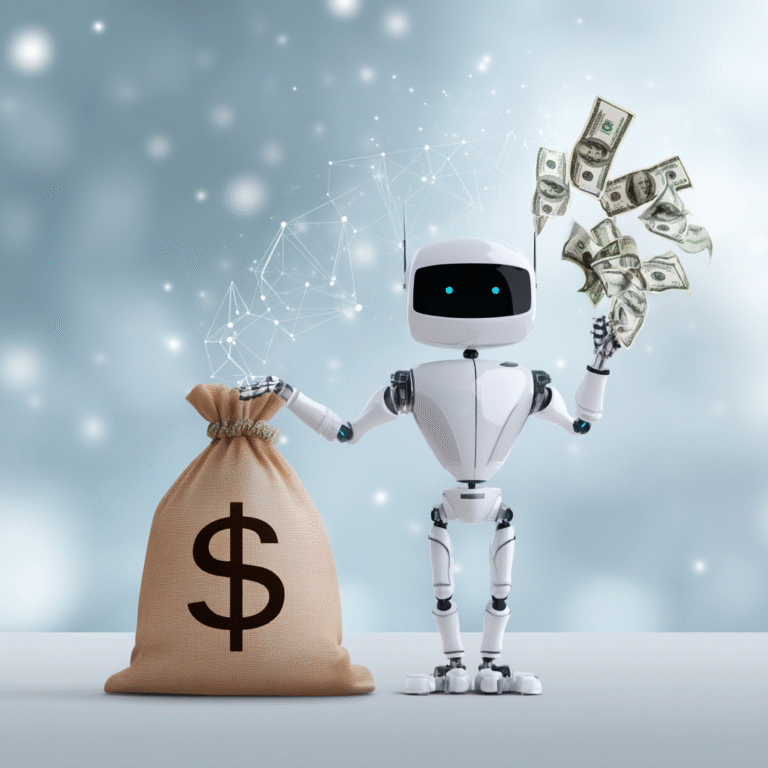The History of AI: A Complete Timeline of Key Milestones (2025)
To the outside world, Artificial Intelligence seemed to appear overnight. One day, AI was the stuff of science fiction; the next, tools like ChatGPT were being used by millions, writing essays, coding websites, and creating art. But this “overnight sensation” was more than 70 years in the making.
The journey of AI is a dramatic story of brilliant ambition, crushing disappointments, and explosive breakthroughs. It’s a tale of “AI Winters,” where funding dried up and progress stalled, followed by “AI Summers,” where new ideas and technologies caused the field to blossom. Understanding this history is crucial—it provides context for today’s rapid advancements and helps us appreciate the decades of work that made them possible.
This guide will walk you through the key milestones in the evolution of AI, from the theoretical dreams of its founders to the powerful generative tools we use today.
The Seeds of Thought: Ancient Dreams & Early Foundations (Pre-1950s)
The dream of creating artificial, intelligent beings is ancient, appearing in myths and legends for centuries. But the scientific foundation for AI was laid in the mid-20th century by pioneers who dared to ask a simple, profound question: “Can a machine think?”
Two Foundational Pillars
- The Artificial Neuron (1943): Neurophysiologist Warren McCulloch and mathematician Walter Pitts created the first mathematical model of a neuron. They proposed a system of simple binary units that could perform logical functions, laying the theoretical groundwork for modern neural networks.
- The Turing Test (1950): In his groundbreaking paper, “Computing Machinery and Intelligence,” British mathematician Alan Turing proposed a test to measure a machine’s intelligence. Known as the Turing Test, it evaluates if a machine’s behavior can be distinguished from that of a human. This paper effectively kickstarted the academic pursuit of AI.
The First “AI Summer”: The Dartmouth Conference & Rule-Based Systems (1956-1980)
The official birth of AI as a field is widely attributed to a 1956 workshop at Dartmouth College. It was here that computer scientist John McCarthy coined the term “Artificial Intelligence.” This event brought together the founding fathers of the field, who were fueled by a shared optimism that human-level intelligence could be replicated in machines within a generation.
The Era of “Expert Systems”
Early AI research focused on “Good Old-Fashioned AI” (GOFAI), which involved creating expert systems. These systems were based on explicit “if-then” rules programmed by humans. They tried to capture the knowledge of a human expert—like a doctor or a chemist—in a specific, narrow domain. While they had some success in specialized tasks, they were brittle, required immense manual effort, and couldn’t learn or adapt to new information.
The First “AI Winter”
By the mid-1970s, the initial optimism had faded. The immense difficulty of creating true intelligence became apparent, and progress stalled. Governments, disappointed by the lack of results, dramatically cut funding. This period of reduced interest and investment became known as the first “AI Winter.”
The Return of the Machine: Key Breakthroughs (1990s – 2010s)
AI re-emerged from the cold in the late 1990s, driven by a new approach—Machine Learning—and a massive increase in computational power. Instead of programming rules by hand, researchers began creating systems that could learn patterns directly from data. This era was defined by several landmark victories of machine over man.
Milestone Victories
- Deep Blue Defeats Kasparov (1997): IBM’s Deep Blue chess computer defeated reigning world champion Garry Kasparov. It was a symbolic moment, proving that a machine could out-strategize the best human mind in one of history’s most complex games.
- Watson Wins Jeopardy! (2011): IBM’s Watson supercomputer competed on the quiz show Jeopardy!, defeating two of its greatest champions. This was a massive breakthrough for Natural Language Processing (NLP), as Watson had to understand nuanced, often pun-filled questions and retrieve precise answers from its vast knowledge base.
The Cambrian Explosion: The Deep Learning Revolution (2012 – Today)
The current AI boom was ignited by the convergence of three critical factors—a “holy trinity” that unlocked exponential progress:
- Big Data: The internet created an unimaginably vast ocean of text, images, and video data for training models.
- Powerful Hardware: The development of GPUs (Graphics Processing Units) for the gaming industry provided the parallel computing power needed to train massive neural networks.
- Algorithmic Breakthroughs: The refinement of “backpropagation” and, most importantly, the invention of the **Transformer architecture** in 2017 provided a highly efficient way for models to process sequential data like language.
The Pivoal Moment: In 2012, a deep learning model called AlexNet, developed by Geoffrey Hinton and his students, shattered records in the ImageNet image recognition competition. This event demonstrated the stunning power of deep neural networks and marked the beginning of the deep learning revolution.
A Simplified Modern AI Timeline:
Frequently Asked Questions
Who is considered the “father” of AI?
There isn’t one single “father.” The title is often shared among several key figures. John McCarthy coined the term “Artificial Intelligence.” Alan Turing laid the philosophical groundwork with the Turing Test. And Geoffrey Hinton, along with Yoshua Bengio and Yann LeCun, are often called the “godfathers of deep learning” for their pioneering work on neural networks.
What exactly was the “AI Winter”?
The “AI Winters” (there were two major ones, in the mid-70s and late-80s) were periods where AI research progress stalled, and government and corporate funding dried up. They were caused by over-inflated promises followed by the harsh reality that the available computer power and data were insufficient to achieve the field’s ambitious goals.




